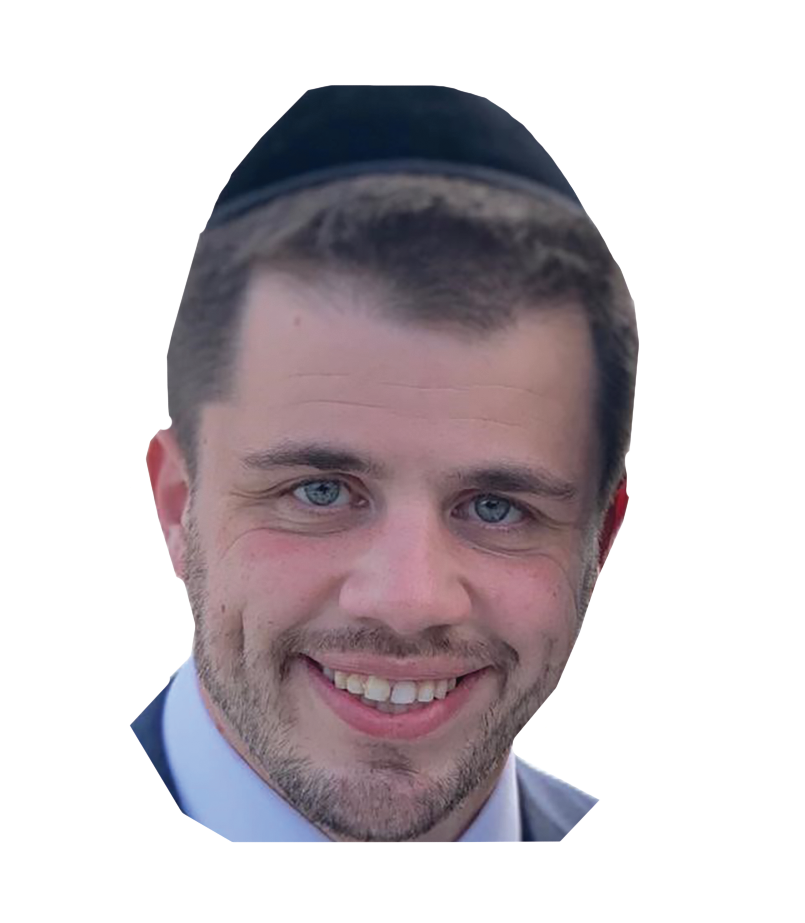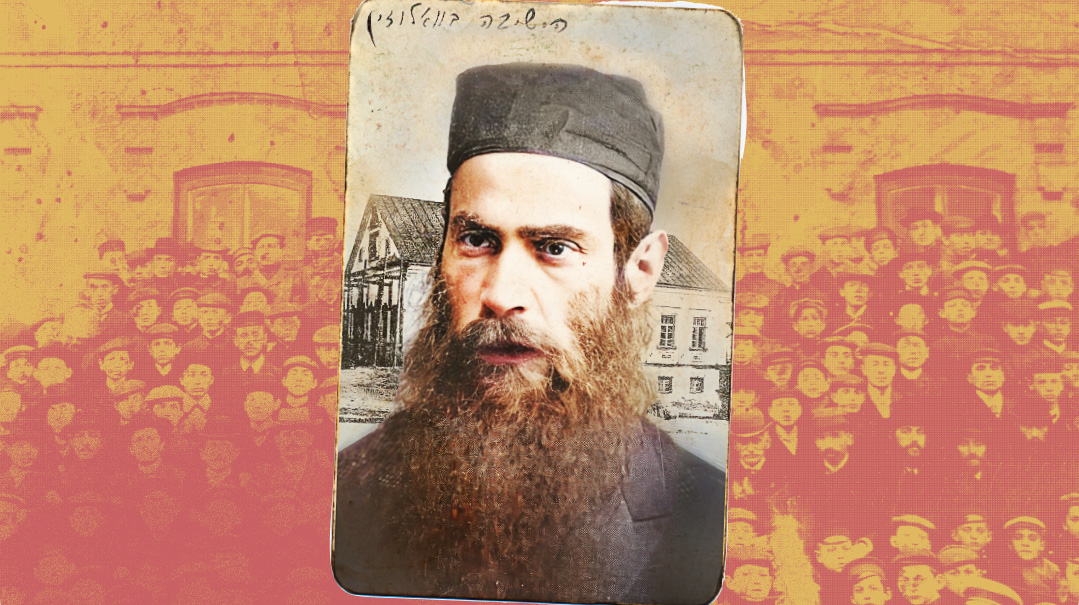A Head of His Time: The Life and Legacy of the Meitscheter Illui, Rav Shlomo Polachek

Today, it is clear that his faith in America’s fledging yeshivah world bore generations of blessed fruits

Photos: Yeshivah University Archives, Torah Vodaath Archives, YIVO. Rabbi Dovid Kamenetsky, Gordon Family, DMS Yeshivah Archives, Feivel Schneider, Feldheim Publishers, US Library of Congress, NYPL Yizkor Book Collection, Friedman Family and Rabbi Dr. Aaron Rakeffet Rothkoff
IN Jerusalem's Kiryat Moshe neighborhood there’s a street with an unusual name: Rechov Ha-Illui — Street of the Genius. Illui is a rather modern term dating back to the last 200 years or so. The Rambam and Rashi were never referred to as illuyim; the term seems to have become popular only with the advent of the European yeshivah world. Fittingly, the street sign in Kiryat Moshe refers to one of its most exemplary and fascinating figures: Rav Shlomo Polachek, the Meitscheter Illui.
The odd name choice on the street sign — not Rechov Rav Shlomo Polachek or Rechov Ha-Illui -Mi’Meitschet — is unique and telling. As a student in the vaunted Volozhin yeshivah, as a prized student of Rav Chaim Brisker, and as a sought-after rosh yeshivah on two continents, Rav Shlomo Polachek was known as the Illui, the ultimate genius. His prodigious mind was so unusual that Rav Elchonon Wasserman wrote that he personally heard Rav Chaim say, “Aza meshunidike illui vi der Meitscheter hab ich in leben nit gezen — in all my life I’ve never met such an extraordinary genius as the Meitscheter.”
But perhaps his lasting legacy lies with the most consequential step he ever took, when he made the decision 100 years ago to accept a position as rosh yeshivah in America’s first institute of higher Torah study, Yeshivas Rabbeinu Yitzchok Elchonon (RIETS).
Unlike so many of his European counterparts, Rav Shlomo Polachek believed that American bochurim were capable of high-level Gemara learning and that the forbidding American soil could bring forth a harvest of authentic Torah scholarship.
Back then, many viewed the Illui’s move as just another inscrutable step taken by a staggering genius whose mind spun faster than they could fathom. Today, it is clear that his faith in America’s fledging yeshivah world bore generations of blessed fruits.

Part I: A Prodigy Comes to Volozhin
Where Is the Boy’s Crib?
It was 1889, and Aharon Rabinowitz, a promising young student in the famed yeshivah of Volozhin, had returned home to the city of Haradzets for Yom Tov. He would later become the last rav of Lida and gain renown for his piety and devotion, even earning the title of “Ish Emes — man of truth,” from the Chofetz Chaim. But he is likely remembered most for an encounter that took place that Succos.
It was no surprise to him when a visitor arrived at his home along with a young boy. The boy’s uncle, Rav Shmuel Meir Horowitz, had been telling Aharon Rabinowitz about him for some time. The man introduced himself as Reb Yosef Polachek and explained that he’d traveled from the small village of Sintzenitch, adjacent to the Grodno province of Meitschet (widely pronounced “may-chet), where he made a living operating an inn as well as the adjoining post office in his remote village. His son Shlomo, he told Aharon, had been born there in 1877 and orphaned of his mother Resha a short time thereafter.
When Reb Yosef hired a tutor to teach his older children Chumash, he began to notice that three-year-old Shlomo would sit under the table quietly and answer all of the questions intended for the older ones. Very soon, it became clear that he was no typical child.
At six he commenced learning Gemara in the nearby Meitschet cheder, and at eight he was sent to a preparatory yeshivah in Novardok, then to the yeshivah of Rav Tzvi Hirsch Resnick in Slonim, where he was quickly promoted to the highest shiur. The older students grew jealous and mistreated the neophyte, yet the slight and bashful Shlomo did his best to ignore their taunts and used the three years he spent at those yeshivos to grow further in his studies.
Now the young boy stood uncomfortably in the doorway, averting his piercing dark eyes from Aharon Rabinowitz’s gaze as his father continued to sing his praises. “He just turned 12, so it’s hard to imagine, but he grasps even the more difficult sugyos without the aid of a teacher. He can easily follow the most difficult reasoning, down to the finest details. I would be greatly appreciative if you could take him to the one place they say a mind like his can grow further: the Volozhin yeshivah.”
Aharon Horeditcher, as he was known in Volozhin, began to speak to the young boy and quickly realized that his father was not exaggerating. Shlomo was thin, weak, and shy, but his eyes radiated wisdom and understanding beyond his years. And when Aharon tested the child’s Torah knowledge, he was dumbstruck by his ability to explain a complex svara in just a few words.
A few days later, he took young Shlomo Polachek back with him to Volozhin, sneaking him in under his coat into the yeshivah building, where they proceeded directly to the office of Rav Naftali Tzvi Yehuda Berlin, the Netziv, who was then serving in his 35th year as Rosh Yeshivah. The scene was witnessed by a fellow student named Eliyahu Gordon, who later shared what happened.
Surprised at the sight of the 12-year-old (who looked much younger), the Netziv quipped, “Why didn’t you bring his crib along?”
Aharon Horeditcher shot back, “Why don’t you test him and decide what size crib he needs?”
Out of respect for his esteemed student, the Netziv agreed and immediately posed a difficult question to young Shlomo and told him to go into the next room to think it over. The boy went toward the door and turned back — he already knew the answer. The Netziv posed another, more difficult question and once again was astounded as he received an answer seconds later. The Netziv tried over and over to stump the young boy but failed.
Rav Chaim Soloveitchik, the assistant rosh yeshivah at the time, walked in during the farher and was immediately taken by the young boy’s erudition. When the exchange was complete, he asked Shlomo where he was from.
“Meitschet,” he shyly answered.
“Then we will call you the Meitscheter Illui,” Rav Chaim replied.
That moniker would stick for life.
Oops! We could not locate your form.







